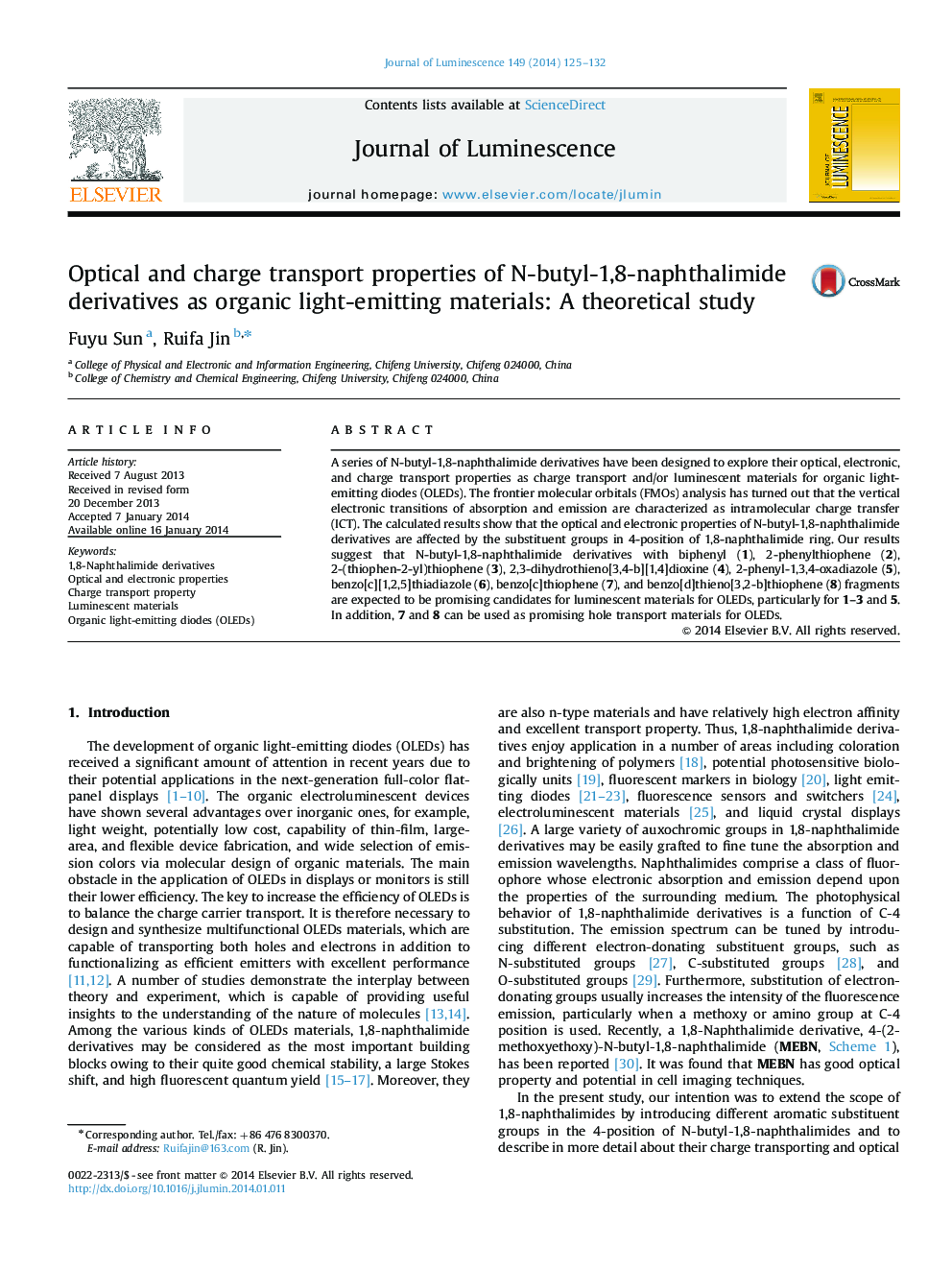| Article ID | Journal | Published Year | Pages | File Type |
|---|---|---|---|---|
| 5400248 | Journal of Luminescence | 2014 | 8 Pages |
Abstract
A series of N-butyl-1,8-naphthalimide derivatives have been designed to explore their optical, electronic, and charge transport properties as charge transport and/or luminescent materials for organic light-emitting diodes (OLEDs). The frontier molecular orbitals (FMOs) analysis has turned out that the vertical electronic transitions of absorption and emission are characterized as intramolecular charge transfer (ICT). The calculated results show that the optical and electronic properties of N-butyl-1,8-naphthalimide derivatives are affected by the substituent groups in 4-position of 1,8-naphthalimide ring. Our results suggest that N-butyl-1,8-naphthalimide derivatives with biphenyl (1), 2-phenylthiophene (2), 2-(thiophen-2-yl)thiophene (3), 2,3-dihydrothieno[3,4-b][1,4]dioxine (4), 2-phenyl-1,3,4-oxadiazole (5), benzo[c][1,2,5]thiadiazole (6), benzo[c]thiophene (7), and benzo[d]thieno[3,2-b]thiophene (8) fragments are expected to be promising candidates for luminescent materials for OLEDs, particularly for 1-3 and 5. In addition, 7 and 8 can be used as promising hole transport materials for OLEDs.
Keywords
Related Topics
Physical Sciences and Engineering
Chemistry
Physical and Theoretical Chemistry
Authors
Fuyu Sun, Ruifa Jin,
